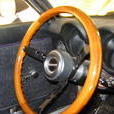IGNORED
What is your (most) valuable "made it myself" PART! and most valuable lesson learned about Z-cars!
-
Recently Browsing 0 members
- No registered users viewing this page.
-
Who's Online 7 Members, 0 Anonymous, 167 Guests (See full list)


 Yarb
Yarb
Recommended Posts
Create an account or sign in to comment
You need to be a member in order to leave a comment
Create an account
Sign up for a new account in our community. It's easy!
Register a new accountSign in
Already have an account? Sign in here.
Sign In Now